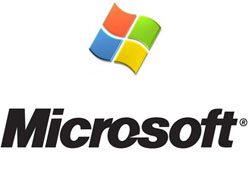Researcher Laurent Gaffié has recently uncovered a zero-day vulnerability that affects the most recent version Windows, Windows 7. It should be mentioned that the vulnerability also affects Windows Server 2008 R2. According to Laurent Gaffié, the vulnerability, if exploited by a person with malicious intent, could allow that attacker to remotely crash Windows 7 (and/or Windows Server 2008 R2) on a LAN or via IE.
"Most secure Os ever”; what ever your firewall is set to, you can get remotely smashed via IE or even via some broadcasting nbns tricks (no user interaction). How funny,” commented Laurent Gaffié.
Redmond-based software giant Microsoft has acknowledged the vulnerability and has provided additional details. As Microsoft reported, this is a Denial-of-Service (DoS) vulnerability that affects the Server Messaging Block (SMB) Protocol - SMBv1 and SMBv2. Only Windows 7 and Windows Server 2008 R2 are affected; Windows Vista, Windows Server 2008, Windows XP, Windows Server 2003 and Windows 2000 are in the clear.
“This vulnerability would not allow an attacker to take control or install malware on a user’s system, but could cause the affected system to stop responding until manually restarted. We are actively monitoring this situation to keep customers informed and will provide additional guidance as necessary. While we are not currently aware of active attacks, we continue to recommend customers review the mitigations and workarounds detailed in the Security Advisory to protect themselves as we work to develop a comprehensive security update,” explained Director with Microsoft Security Response Center (MSRC), Mike Reavey.
The security advisory Mike Reavey mentioned above is Security Advisory 977544. You can view it by clicking here.
Microsoft also mentioned that it is “concerned that this new report of a vulnerability was not responsibly disclosed, potentially putting computer users at risk”. But why would Laurent Gaffié publicly disclose the vulnerability in an irresponsible manner? It seems that the researcher did try to go through the proper channels, but that did not work out too well. Microsoft’s Security Response Center (MSRC) did not acknowledge his finding as a vulnerability that needs to be patched. Soon after Laurent Gaffié made he vulnerability public, MSRC scrambled to release Security Advisory 977544 and to post a workaround.
Here is the workaround provided by MSRC: “Block TCP ports 139 and 445 at the firewall. These ports are used to initiate a connection with the affected component. Blocking TCP ports 139 and 445 at the firewall will help protect systems that are behind that firewall from attempts to exploit this vulnerability. Microsoft recommends that you block all SMB communications to and from the Internet to help prevent attacks.”
"Most secure Os ever”; what ever your firewall is set to, you can get remotely smashed via IE or even via some broadcasting nbns tricks (no user interaction). How funny,” commented Laurent Gaffié.
Redmond-based software giant Microsoft has acknowledged the vulnerability and has provided additional details. As Microsoft reported, this is a Denial-of-Service (DoS) vulnerability that affects the Server Messaging Block (SMB) Protocol - SMBv1 and SMBv2. Only Windows 7 and Windows Server 2008 R2 are affected; Windows Vista, Windows Server 2008, Windows XP, Windows Server 2003 and Windows 2000 are in the clear.
“This vulnerability would not allow an attacker to take control or install malware on a user’s system, but could cause the affected system to stop responding until manually restarted. We are actively monitoring this situation to keep customers informed and will provide additional guidance as necessary. While we are not currently aware of active attacks, we continue to recommend customers review the mitigations and workarounds detailed in the Security Advisory to protect themselves as we work to develop a comprehensive security update,” explained Director with Microsoft Security Response Center (MSRC), Mike Reavey.
The security advisory Mike Reavey mentioned above is Security Advisory 977544. You can view it by clicking here.
Microsoft also mentioned that it is “concerned that this new report of a vulnerability was not responsibly disclosed, potentially putting computer users at risk”. But why would Laurent Gaffié publicly disclose the vulnerability in an irresponsible manner? It seems that the researcher did try to go through the proper channels, but that did not work out too well. Microsoft’s Security Response Center (MSRC) did not acknowledge his finding as a vulnerability that needs to be patched. Soon after Laurent Gaffié made he vulnerability public, MSRC scrambled to release Security Advisory 977544 and to post a workaround.
Here is the workaround provided by MSRC: “Block TCP ports 139 and 445 at the firewall. These ports are used to initiate a connection with the affected component. Blocking TCP ports 139 and 445 at the firewall will help protect systems that are behind that firewall from attempts to exploit this vulnerability. Microsoft recommends that you block all SMB communications to and from the Internet to help prevent attacks.”

























